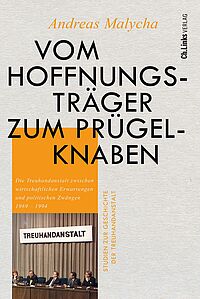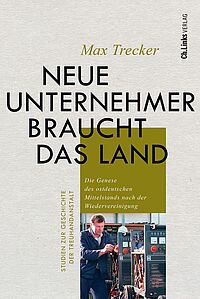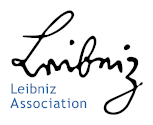- The Institute
- Research
- Dictatorships in the 20th Century
- Democracies and their Historical Self-Perceptions
- Transformations in Most Recent History
- International and Transnational Relations
- Edited Source Collections
- Dissertation Projects
- Completed Projects
- Dokumentation Obersalzberg
- Center for Holocaust Studies
- Berlin Center for Cold War Studies
- Publications
- Vierteljahrshefte
- The Archives
- Library
- Center for Holocaust Studies
- News
- Dates
- Press
- Recent Publications
- News from the Institute
- Topics
- Munich 1972
- Confronting Decline
- Feminist, Pacifist, Provocateur
- Der Mauerbau als Audiowalk
- Digital Contemporary History
- Transportation in Germany
- Envisaged Futures at the End of the Cold War
- From the Reichsbank to the Bundesbank
- German Federal Chancellery
- History of Sustainabilities: Discourses and Practices since the 1970s
- Changing Work
- Democratic Culture and the Nazi Past
- The History of the Treuhandanstalt
- Foreign Policy Documentation (AAPD)
- Dokumentation Obersalzberg
- Hitler, Mein Kampf. A Critical Edition
- "Man hört, man spricht"
- Dates
- Press
- Recent Publications
- News from the Institute
- Topics
- Munich 1972
- Confronting Decline
- Feminist, Pacifist, Provocateur
- Der Mauerbau als Audiowalk
- Digital Contemporary History
- Transportation in Germany
- Envisaged Futures at the End of the Cold War
- From the Reichsbank to the Bundesbank
- German Federal Chancellery
- History of Sustainabilities: Discourses and Practices since the 1970s
- Changing Work
- Democratic Culture and the Nazi Past
- The History of the Treuhandanstalt
- Foreign Policy Documentation (AAPD)
- Dokumentation Obersalzberg
- Hitler, Mein Kampf. A Critical Edition
- "Man hört, man spricht"
In the Laboratory of the Market Economy
The History of the Treuhandanstalt 1989/90 to 1994
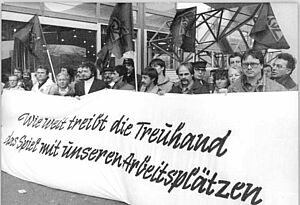
The privatization of the East German economy after 1990 radically changed the property and production situation in the territory of the former GDR. The phase of selling off public and state property is singular in the history of modern industrial societies. The transformation from a planned socialist-style economy to a social market economy began within the context of the collapse of the East German state and the unification of Germany. The Treuhandanstalt (“Trust Agency”) – originally called into being by East German civil rights proponents for the administration of state property – played a considerable role in this process, becoming the proprietor of the state-run businesses as of March 1, 1990. In the process, it took on the responsibility for some four million jobs in the country. With the two German states joining together in the Monetary, Economic, and Social Union of July 1, 1990, East German companies were suddenly confronted with the conditions of the global market and around 7600 firms were under threat of acute insolvency overnight. As revenues on the East German and Eastern European markets dramatically collapsed and costs became increasingly difficult to cover, the liquidity issue rapidly developed into a question of viability that left a strong mark on the ongoing economic development of the new eastern states of the Federal Republic of Germany.

The Treuhandanstalt soon found itself in the crosshairs of criticism regarding the socioeconomic consequences of privatization in eastern Germany. This included charges of squandering the property of the people, wasting billions in tax money, and accelerating the industrial collapse of the former GDR. The dire economic situation people experienced due to unemployment was seen as being the result, to a large degree, of the Treuhandanstalt’s activities. The agency was thus seen to bear the main responsibility for the deindustrialization of the country and the worsening of the social and economic situation for a large number of people. In other words, the Treuhandanstalt ultimately stood as a symbol for the decline in productivity and employment and for the social upheaval in eastern Germany. This focus on the agency and criticism of its privatization policies continues nearly unabated to this day. The economic upheaval, however, was in fact characterized by a “double transformation”, in which problems due to unification and global changes to the economic and financial systems overlapped and served to exacerbate one another. The introduction of the market economy to eastern Germany did not only unfold in accordance with the old West German model, but also under conditions of an increasingly networked global economy that placed the West under pressure to reform as well. The idea of catch-up modernization after 1990 in the eastern states would thus not suffice as the West German model was in the process of change itself.
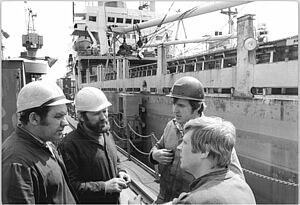
Many books have since been published on the history of the Treuhandanstalt and the privatization of the East German economy, mostly however written by journalists. This compares with only a few academic publications over the past 25 years that include the activities of the Treuhandanstalt, none of which took primary sources into account.
This research project at the Leibniz Institute for Contemporary History will therefore be the first to investigate, on a broad source-based foundation, the structure and workings of the Treuhandanstalt, its position in the political power matrix of the Federal Republic of Germany, and its local scope of action. This will provide a solid academic basis and empirical footing for the investigation into the historical context of the agency in the unified Germany. The Treuhandanstalt, moreover, needs to be explored as an instrument meant to provide solutions to economic problems. The consequences and effects of the privatization policies are also to be analyzed in the study. The project will work with a broad range of methods from the fields of political, cultural, economic, and social history, and should provide a new basis for a more objective discussion of the historical place of the Treuhandanstalt. The scope of the study does not permit an encyclopedic look into all working areas of the Treuhandanstalt, but instead involves the selection of central topics to serve as examples for the structure and workings of the agency.
The Project is composed of four connected and interrelated parts:
1. The Treuhandanstalt in Parliamentary Politics and Regulatory Concepts
a) From Bearer of Hope to Whipping Boy: The Treuhandanstalt between Economic Expectations and Political Restrictions, 1989-1994
(Andreas Malycha)
b) Communists into Capitalists: The Genesis of Eastern German Entrepreneurship after Reunification
(Max Trecker)
2. Privatization Policies in the Region
b) The Transformation of the East German Shipbuilding Industry between Economics, Politics and Society
(Eva Lütkemeyer)
c) Actor Structures and Privatization Practice in Transformation: The Work of the Treuhandanstalt in the State of Brandenburg 1990–1994
(Wolf-Rüdiger Knoll)
3. Societal Consequences and Controversies
a) Unemployment and Job Market Policies in the Transition from Planned to Market Economy and the Role of the Treuhandanstalt 1988–1998
(Dierk Hoffmann, project head)
b) Cooperation – Conflict – Compromise: Trade Unions, the Treuhandanstalt and Political Culture in the Transformation of Eastern Germany(1989–1994)
(Christian Rau)
4. International Dimensions of Privatizaiton Policy
a) Directing Foreign Investment to Eastern Germany after (and before) 1989
(Keith R. Allen)
b) From Solidarność to Shock Therapy: Economic Thought and the System Transformation in Poland, 1975-1995
(Florian Peters)
c) Privatization in Czechoslovakia/Czech Republic in the 1990s
(Eva Schäffler)

Fünf Fragen an... Dierk Hoffmann
Im Interviewformat „Fünf Fragen an…“ gibt Projektleiter Dierk Hoffmann Einblicke in die Auswertung der historischen Akten zur Treuhandanstalt.
Publikationen
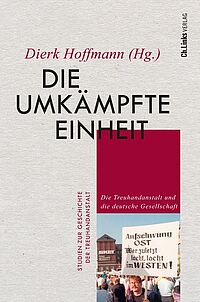
Dierk Hoffmann (Hrsg.)
Die umkämpfte Einheit. Die Treuhandanstalt und die deutsche Gesellschaft
Studien zur Geschichte der Treuhandanstalt
Berlin 2022
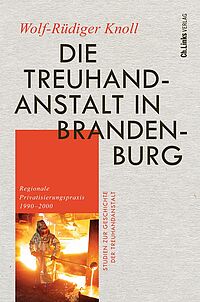
Wolf-Rüdiger Knoll
Die Treuhandanstalt in Brandenburg. Regionale Privatisierungspraxis 1990-2000
Studien zur Geschichte der Treuhandanstalt
Berlin 2022
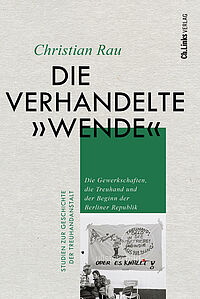
Christian Rau
Die verhandelte "Wende". Die Gewerkschaften, die Treuhand und der Beginn der Berliner Republik
Studien zur Geschichte der Treuhandanstalt
Berlin 2022
Andreas Malycha
Vom Hoffnungsträger zum Prügelknaben. Die Treuhandanstalt zwischen wirtschaftlichen Erwartungen und politischen Zwängen 1989-1994
Studien zur Geschichte der Treuhandanstalt
Berlin 2022
Max Trecker
Neue Unternehmer braucht das Land. Die Genese des ostdeutschen Mittelstands nach der Wiedervereinigung
Studien zur Geschichte der Treuhandanstalt
Berlin 2022



